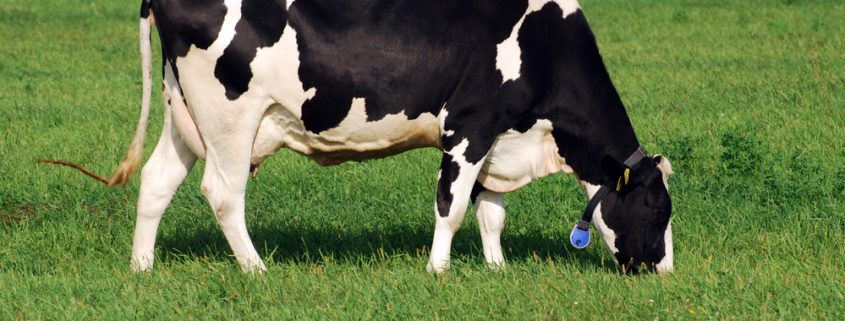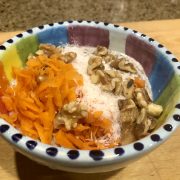To Eat or Not to Eat Beef
Eating beef is a controversial and personal topic. I’ve gone from one extreme (beef almost every day) to another (flexitarian: fish only). Today I know that meat can be good for our health, and red meat in particular is one of the most nutrient-dense dietary sources available. Meat-eating has been a part of the human diet for more than 2 million years.
Both for health and environmental reasons, the key is sustainably-raised beef in moderate amounts with a heavy emphasis on plant foods.
Why eat meat?
Proteins (composed of amino acids) are our bodies’ building block to form organs, nerves, muscles and flesh. Enzymes (specialized proteins) are the catalysts of all our biochemical process. Antibodies are also specialized proteins. Protein is essential for normal growth and the formation of hormones. Animal protein is the only source of complete protein. Red meats supply the best mixture of amino acids to build human tissues and are rich many nutrients:
- iron content is good and more usable by the body than iron from any other source
- other essential minerals like zinc, selenium, potassium, copper and phosphorus
- vitamins A and D, also B vitamins (thiamine, niacin, riboflavin), especially hard-to-get vitamin B12
However, the red meat today is not the same of our ancestors. The main problem is that it is not like the wild animals on which our ancestors thrived. Free-ranging animals (deer, moose, elk, bison) had much lower fat content. They lived naturally on vegetation and were not force-fed grains often containing pesticide sprays and chemicals while experiencing less activity. Also, they used meat for feasts and special occasions, not as a main food. Historically, cattle ranged freely, eating plants and had a balance of omega-3 and omega-6 fats essential for human health.
The problem with beef is factory-farmed beef
- Cows are meant to eat grass. They are fed corn. Corn is unnatural, but it is cheaper; making them grow faster and fatter. This produces feedlot bloat (responsible for thousands of cattle deaths per year), causes liver abscesses and respiratory diseases.
- Factory-farmed animals are given hormones to grow fast. Hormones are typically packaged in a pellet surgically implanted behind the ear when cattle arrive at the feedlot. These induce estrogen, progesterone, testosterone, zeranol, trenbolone, and melengestrol. When administered to cattle, naturally occurring hormone levels can increase 7 – 20 times.
“Researchers believe hormonal residues, measurable levels which are present at slaughter in the muscle, fat, liver, kidneys and other organ meats of livestock, contribute to premature puberty in young girls – associated with higher risk for breast cancer later in life – and thought to cause lower sperm count in boys. It seems that these stimulants can disrupt hormone balance, natural development and reproduction as well as possibly cause cancer.” — Stephanie Sacks, What the Fork Are You Eating?
- Close confinement and unsanitary conditions make animals sick. They’re given antibiotic medications in their daily food to prevent disease outbreaks and to keep animals alive and growing. Antibiotics are potent medications used for fighting bacterial infections. Overuse of meds on animals, engenders antibiotic-resistant bacteria in meat. Prevalence of such bacteria promotes food-borne illness and can trigger disease in ways never seen before.
- The unnatural diet and conditions in factory-farmed beef lead to too much of the fat we don’t need (saturated fat and omega-6 fatty acids) and too little of the fat we do need (omega-3 fatty acids).
“When you eat industrially farmed meat, you are getting dosed up on potentially antibiotic resistant bugs. According to the Centers for Disease Control and Prevention “Each year in the US at least 2 million people become infected with bacteria that are resistant to antibiotics and at least 23,000 people die each year as a direct result of these infections.” — Stephanie Sacks, What the Fork Are You Eating?
What to Do?

- I choose to eat red meat about twice a month and aim for variety: grass-fed beef, bison, lamb, venison (when available). Happily our local HEB grocery store usually carries it. Even elk sometimes!
- Boar/wild hog is another alternative in Texas. They’ve become a pest for ranchers and farmers.
- Rather than eat the muscle meat only (yup, most meat we eat is muscle: tenderloin, shoulder roast etc), I look for “ancestral”ground meat. This includes liver, kidneys which are high in essential minerals such as zinc and healhier fats healthy fats,
- Look for products that bear the Animal Welfare Approved (AWA) or Certified Humane Raised and Handled (generally known as Certified Humane) seals of approval. Each has its own blue, green and white label on packages of meat, poultry, eggs, that have been certified by a third party that animals are treated humanely and drugs are used only when absolutely necessary (never routinely
- When dining out ask questions – the more people ask, sustainably-sourced option will increase
- Minimize health and environmental risks by supporting pasture-based farmers
“If you choose wisely when eating animals, it will surely make a difference in your health. You will be at little or no risk of consuming antibiotic-resistant bacteria and take in more omega-3 fatty acids (those highly anti-inflammatory and health-supportive fats) when you choose truly grass-fed beef and pasture-raised poultry. Plus, you’ll be helping farmers who are truly doing the right thing, and in turn help the environment.” — What the Fork Are You Eating
The fact is: meat can be part of a healthy lifestyle—when chosen and eaten the way omnivore humans did for millenia.
Where to Shop
- Shop with your Heart: ASPCA
- Local Harvest – find your local farmers’ market
Learn more
5 Reasons to Switch to Grass-fed Meat – Frank Lipman
5 Reasons Why You Should Never Eat Factory-Farmed Meat – Mind Body Green
Is Meat Good or Bad for You? – Mark Hyman
Books
Put Your Heart in Your Mouth Natasha Campbell-McBride, MD
The Big Fat Surprise Nina Teicholz








Leave a Reply
Want to join the discussion?Feel free to contribute!